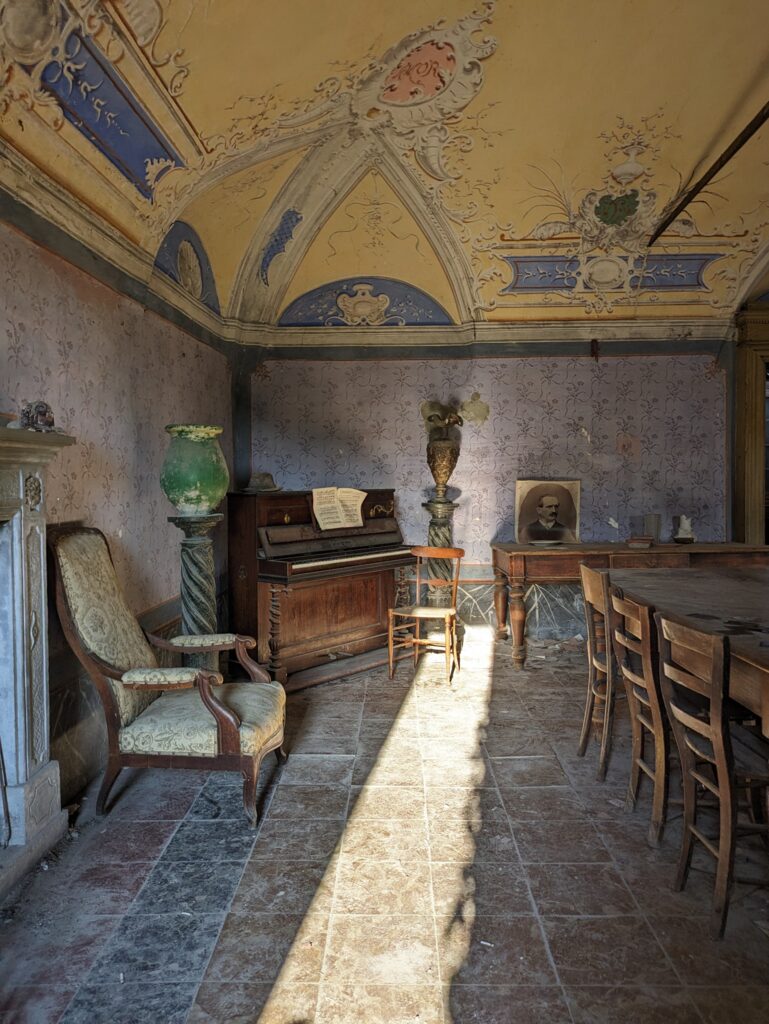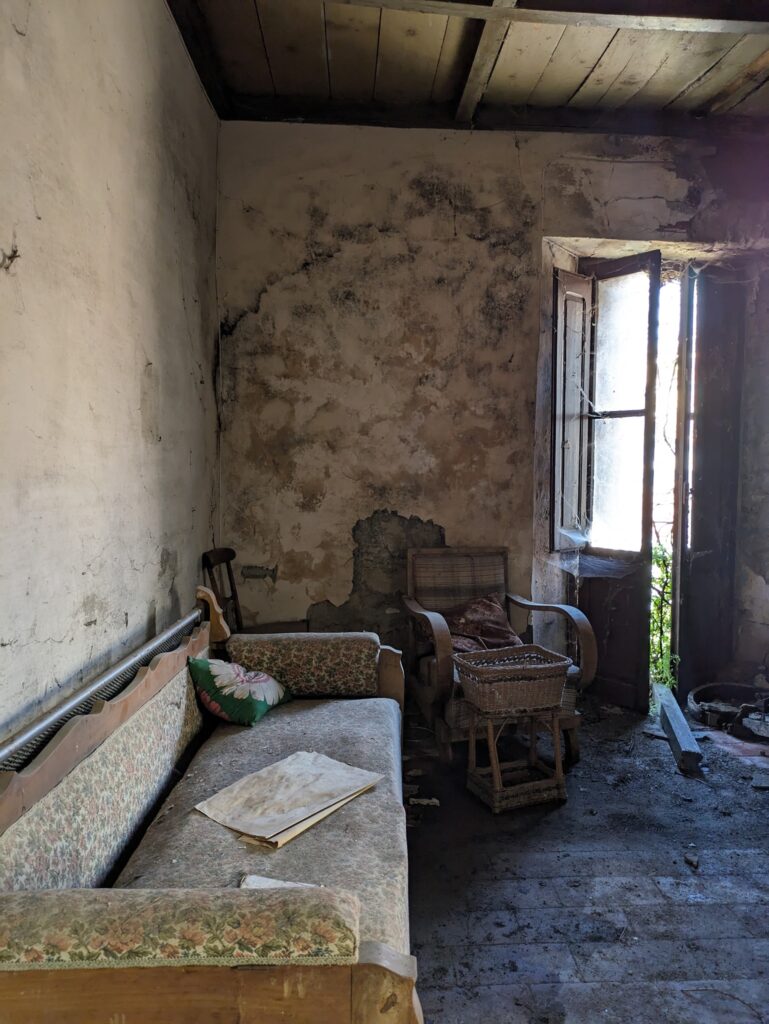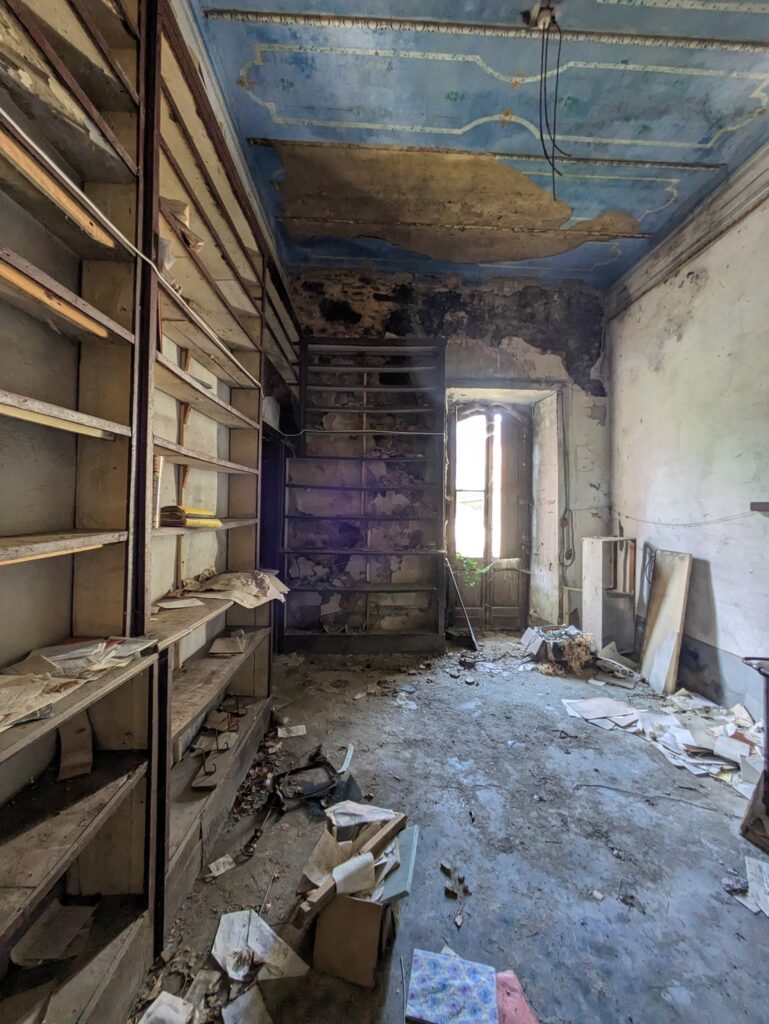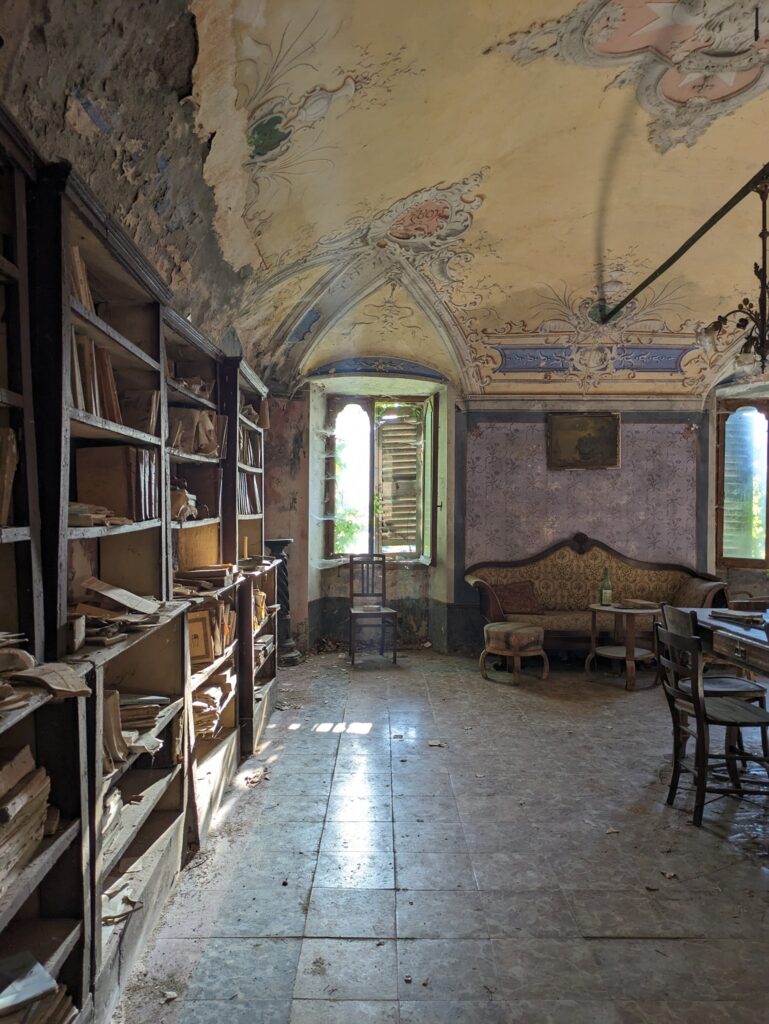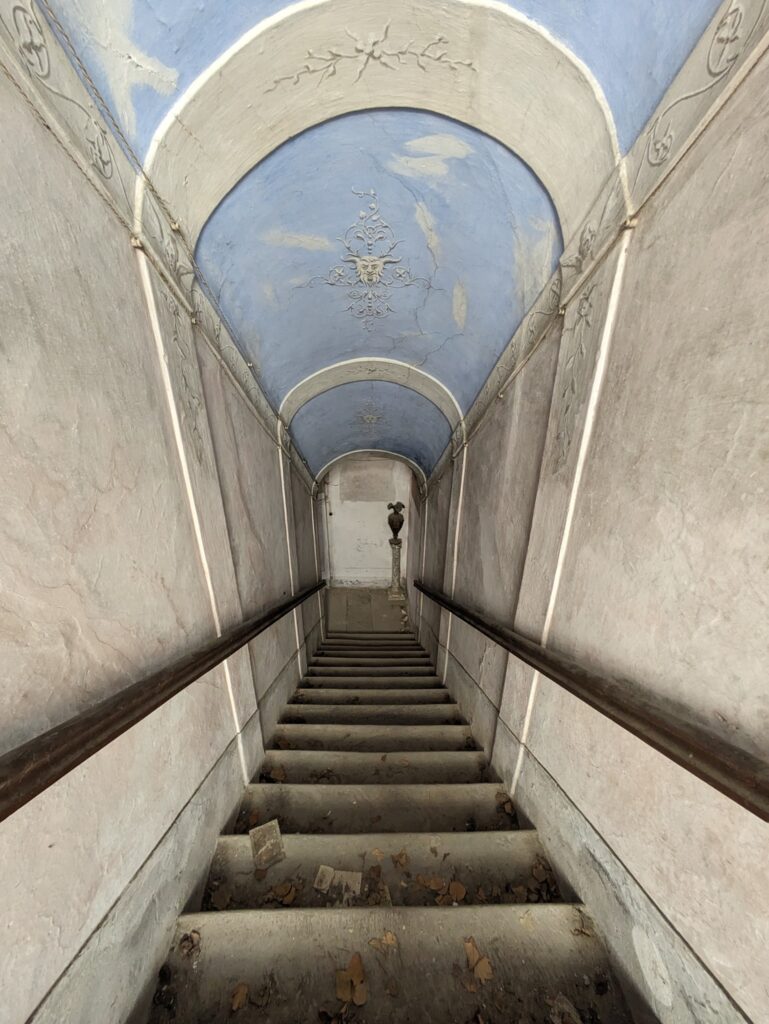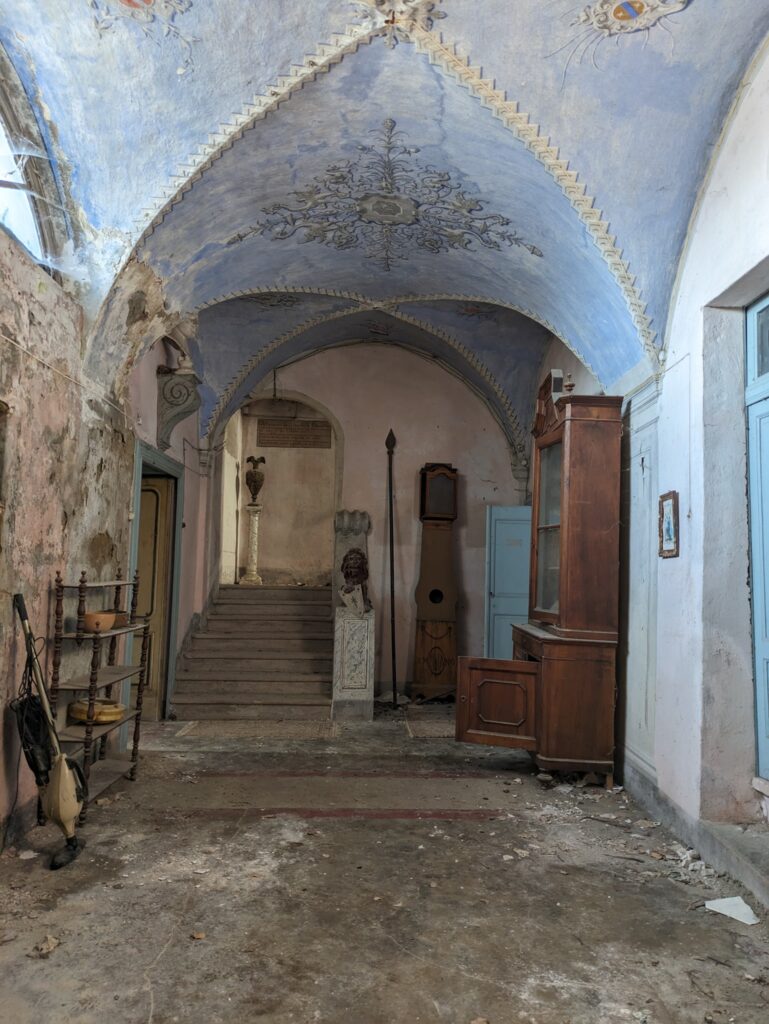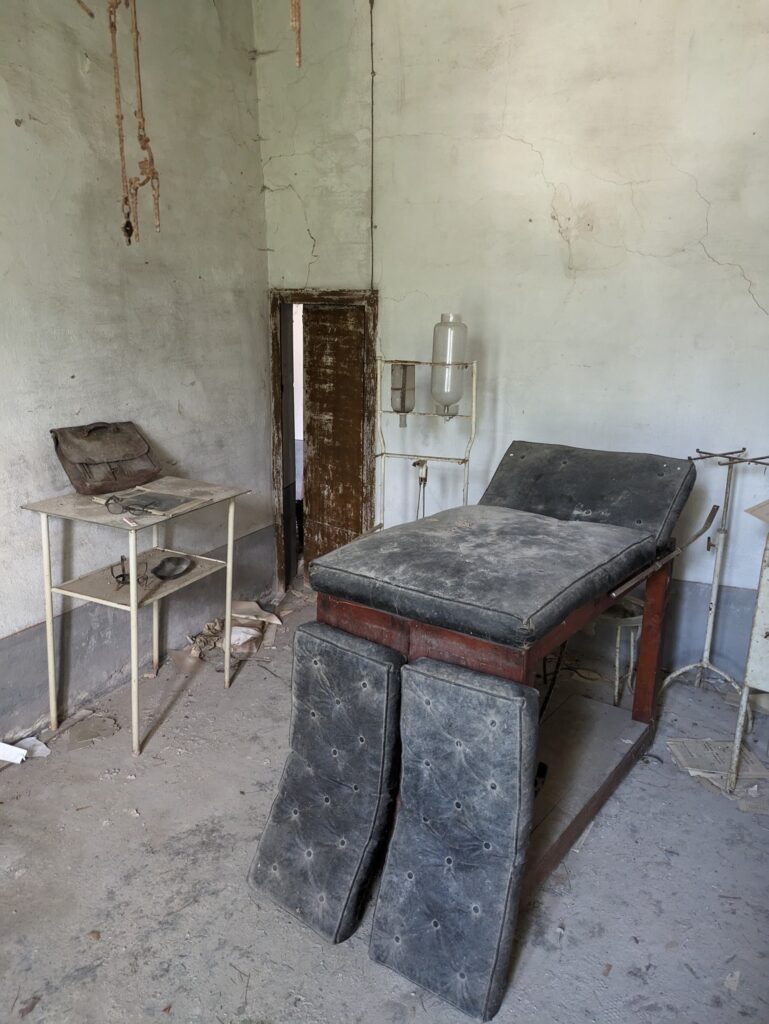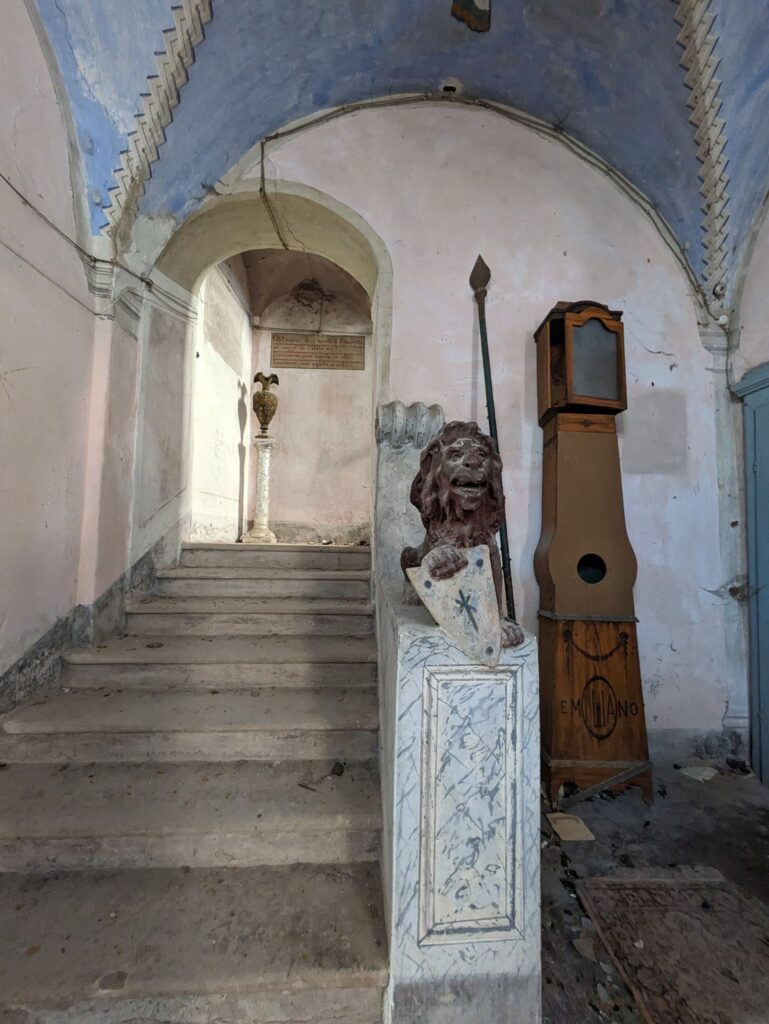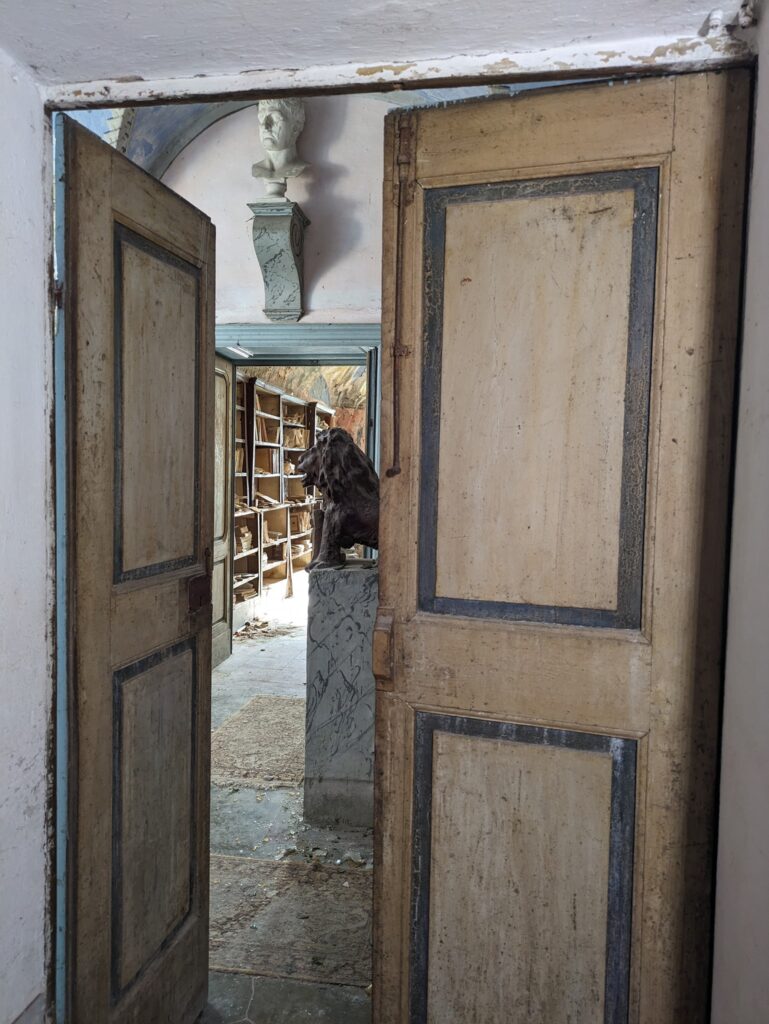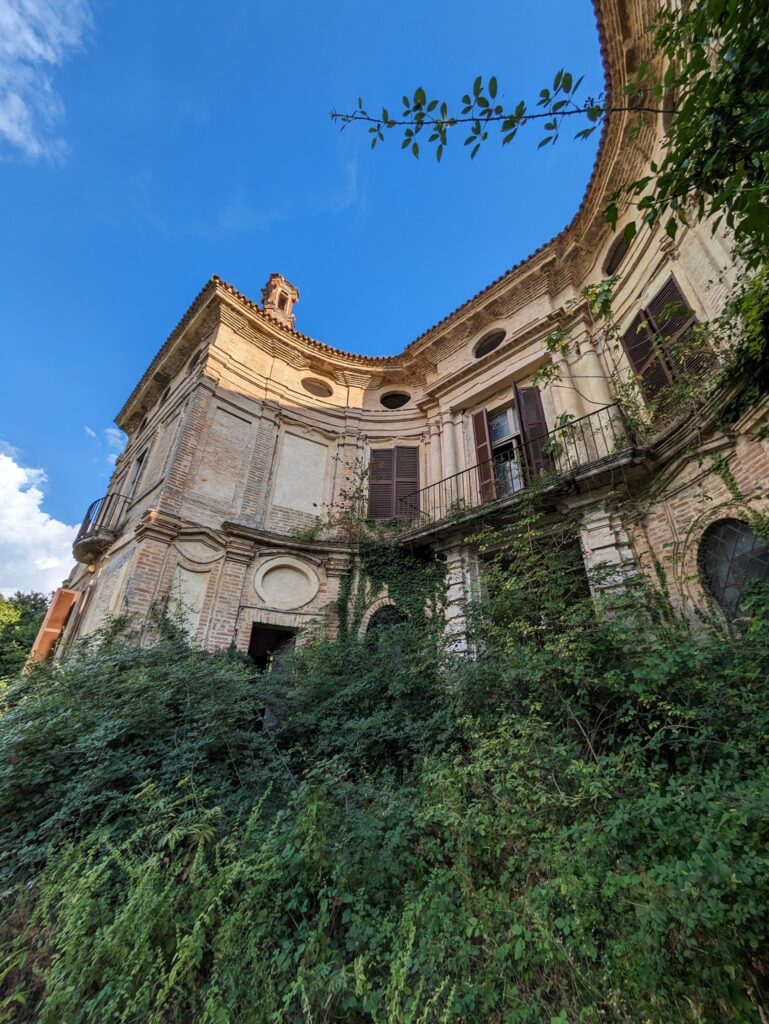Architectural Heritage
This structure has the classic hallmarks of a rural European manor — possibly Italian, French, or Spanish — dating anywhere between the late 1600s to the 1800s. Several key architectural elements point to this:
- Terracotta-tiled roof: Common in Mediterranean regions, it helps regulate indoor temperature.
- Stone and brick construction: Suggests durability and local craftsmanship, possibly indicating that the structure was originally meant to last centuries.
- Round “oculus” windows near the roofline: A stylistic feature often seen in Renaissance or Baroque-era buildings.
- Shutters and arched openings: Not only practical but stylistically tied to countryside villas or colonial estates.
Signs of Decay and Nature’s Reclaim
Time has clearly taken its toll. The building shows signs of:
- Neglect and abandonment: Shutters hanging off hinges, some windows boarded or missing, vines overtaking the walls, and wild growth consuming the foreground.
- Structural damage: The crumbling brick column or chimney in the foreground is either a remnant of a larger structure or a part of this house that has collapsed.
- Dry vegetation and erosion: The golden, brittle grass and lack of human activity suggest this place hasn’t seen maintenance in years — possibly decades.
Yet despite the decay, there’s a graceful aging here. The building hasn’t entirely given up. Its core structure remains intact, walls still stand strong, and architectural lines are visible and beautiful.
A Glimpse Into the Past
This home could have belonged to a small noble family, a wealthy landowner, or a retired merchant. A few possibilities:
- Countryside Villa: Used for seasonal stays during harvest or summer.
- Agrarian Manor: A central estate in a working vineyard, olive grove, or orchard.
- Clergy Residence or Monastery Guesthouse: Religious buildings from centuries past often had this form — especially with that plain, sturdy construction and natural materials.
It’s likely that it was abandoned during modernization, as families moved toward urban areas or larger towns.
What Could It Be Now?
There’s so much potential in a structure like this. With the right care and vision, this place could be:
- A Boutique Heritage Hotel or Airbnb: Ideal for rural retreats or slow tourism.
- A Restored Private Estate: For someone dreaming of vineyard life or a peaceful artistic haven.
- A Cultural or Historic Site: Preserved to educate future generations about architecture, lifestyle, or agricultural practices of past centuries.
The natural lighting, weathered texture, and rich historical soul give it cinematic beauty — the kind of place filmmakers or artists would love to capture.
Poetic Charm
There’s something deeply poetic about how the sun touches the stone here. The shadows from the open shutters and ruined column seem to whisper stories of the past — laughter in the halls, meals on long wooden tables, echoing footsteps on stone floors, maybe even love letters written on balconies like the one seen.
